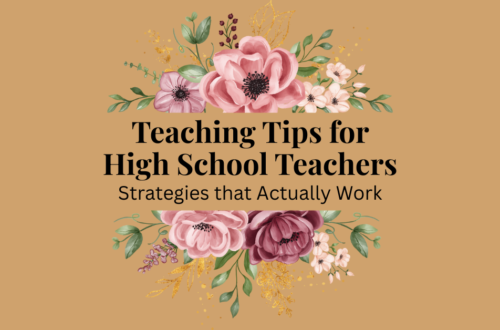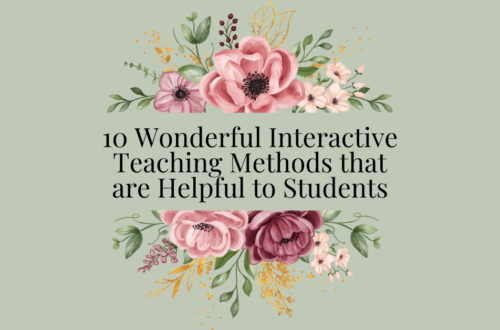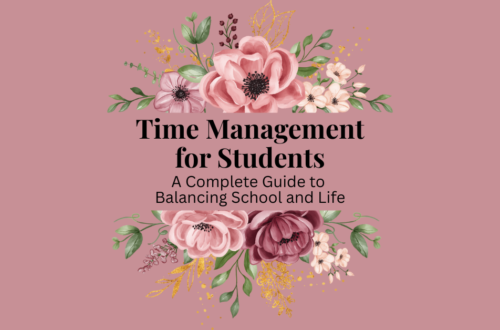Math can be a challenging subject for many students, often bringing feelings of frustration, anxiety, or overwhelm. As teachers, we know our job goes far beyond just delivering content—it’s also about supporting the emotional and mental well-being of our students. That’s why I decided to create a “calm corner” in my classroom.
The calm corner is a space where students can take a mental break, regulate their emotions, and return to their work feeling more focused and refreshed. Since introducing it, I’ve seen a noticeable shift in my classroom’s overall atmosphere—students feel more supported, more in control, and less stressed when the material gets tough.
What is the Calm Corner?
My classroom’s calm corner is a small, designated area tucked away from the main hustle of the room. It features a large, color-by-number poster I found on Amazon, which students can work on whenever they’re feeling overwhelmed. There’s something about quietly coloring that helps students decompress and reset.
In addition to the poster, the space is designed with calming colors, soft lighting (a small lamp instead of harsh overhead lights), and, when possible, some quiet instrumental music playing nearby. It’s intentionally cozy and welcoming—a place where students know they’re allowed to take a breather.
How It Helps with Stress Relief
Math anxiety is real. Some students feel immediate stress when they encounter a problem they don’t understand or when they’re worried about being wrong. That’s where the calm corner comes in. Activities like coloring have been shown to reduce anxiety and improve focus, making them perfect for helping students reset during a tough class.
This space gives students permission to pause. Instead of shutting down or acting out when frustration hits, they have an outlet that lets them regulate their emotions and return to learning with a clearer mind.
How Students Use the Calm Corner
I’ve introduced the calm corner as a tool for emotional regulation, not as a reward or punishment. Students know they’re allowed to use the space when they’re feeling overwhelmed, frustrated, anxious, or just in need of a short break. They’ve learned to recognize these emotions and make the choice to step away for a few minutes.
To keep the space productive and fair, I’ve set a few simple guidelines—usually a 5–10 minute limit and a reminder to rejoin the class when they feel ready. These boundaries ensure the corner remains available for all students and doesn’t become a distraction.
Why It Works in a Math Classroom
Creating a calm, stress-free space in a traditionally high-pressure subject like math has made a world of difference. Students have told me that the calm corner helps them feel more in control, and they appreciate that their emotional well-being is acknowledged as part of their learning experience.
This approach also aligns with my larger goal of fostering a supportive and positive classroom environment—one where students feel safe to make mistakes, ask questions, and learn at their own pace.
Benefits for Students and the Classroom
Since adding the calm corner, I’ve noticed more than just fewer meltdowns. Students are more focused, more confident, and more willing to take risks in their work. There’s been a shift toward a calmer classroom culture, where self-awareness and self-care are encouraged.
It has also helped students feel seen. They know their emotions matter and that it’s okay to take a step back when needed. This sense of support goes a long way in building trust and strengthening student-teacher relationships.
Setting Up Your Own Calm Corner
Interested in adding a calm corner to your classroom? Here are a few tips to get started:
- Choose a quiet, accessible spot in your room—somewhere away from the busiest areas.
- Add calming visuals or tools, like a color-by-number poster, fidget items, or soft seating.
- Keep the space inviting with neutral or soft colors, gentle lighting, and a peaceful atmosphere.
- Set clear expectations with your students about when and how the space can be used.
- Be flexible—adjust the space as you learn what works best for your students.
You don’t need a huge budget or lots of space. Even a small nook with a chair and some coloring sheets can make a big impact.
Conclusion & Call to Action
Creating a calm corner in the math classroom has been one of the most impactful things I’ve done for my students’ well-being. It’s a reminder that emotional health matters just as much as academic success—and that when students feel safe and supported, they learn better.
If you’ve been thinking about creating a similar space, I highly encourage you to try it. Start small and see how your students respond.
Have you created a calm corner or used other strategies to support student emotions in your classroom? I’d love to hear about it! Leave a comment below and share what’s worked for you.





